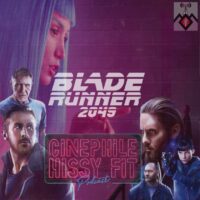After tediously mining the tenets of longing and loss with A Ghost Story, having virtuoso filmmaker David Lowery slather his cinematic varnish to Arthurian legend with The Green Knight counts as a very intriguing escalation of his talent. If anyone can wring existential essence out of alliterative Medieval verse that is normally sanitized for frivolous fantasy, it’s Lowery and the boutique freedom granted to him by A24 Films. Regrettably, for a tale soaked with prospective heft, what could or should be a constrictive squeeze on our hearts and minds is more poked, prodded, and painted than anything else.
For those inexperienced with the Middle Age bardic tale, it is a New Year’s Eve feast and the aging King Arthur (Sean Harris), flanked by his Queen Guinevere (Kate Dickie, given so little to do), wants to hear a story of adventure. His youngest knight and own nephew, Sir Gawain, played by Dev Patel, has yet to compose one worth telling. He would rather spend his present days at a brothel pining over his enchanting lady of choice (Oscar winner Alicia Vikander) while still living under the roof and influence of his esoteric and rumored hex of a mother (Sarita Choudhury). Gawain gets his chance when ominous destiny walks into the great hall in the form of the gigantic Green Knight of the Green Chapel.
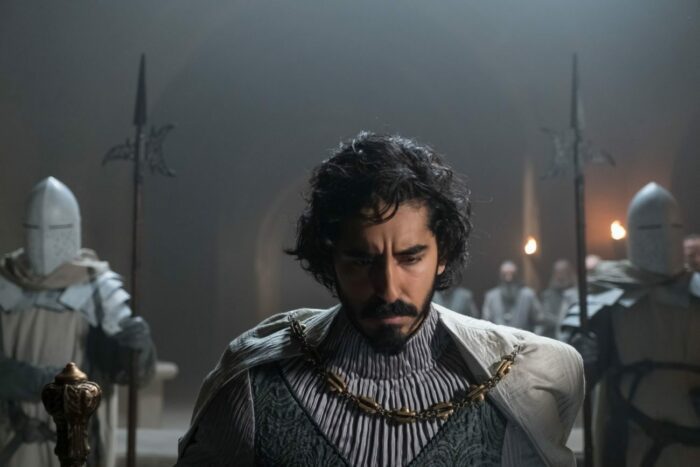
Made of gnarled wood, speaking with riddlesome platitudes of booming bass, and armed with an enormous botanically-powered axe, the imposing rider presents a challenge to one “boldest of blood” and “wildest of heart.” Try to land a blow against him. Then, come to the Green Chapel a year and a day later to receive an equal blow in return, and live to tell about it. Gawain, sensing a place to impress the gathering and script his own legend, steps up, receives the king’s own sword (you know, the one that’s supposed to have a famous name they don’t use, more on that later), and takes his mighty swing.
The result is an encircling countdown of dread for Gawain where the prospect of “taking as good as he gave” likely means his own demise. He, always insisting he’s not a knight, failed to remember that this is only a game and oversteps the cunning wisdom to participate in such a ploy cleanly and safely. Next time, go for the wrist slap, not the jugular.
No amount of heroic community celebration softens the quest Gawain must take when his year is up. He can leave and get what’s coming to him or he can stay and spoil all that accumulated favor as a coward. Failing forward, Gawain could arrive at the Green Chapel and still turn out to be a coward there as well when the monster and his axe come calling. Either way, he is bound to this promise and the young knight has a perilous six-day journey of chaptered interludes and challenging intersections ahead. This quest requires him to prepare himself and what will be the solid or crumbled foundation of his future honor that will change him as a man.
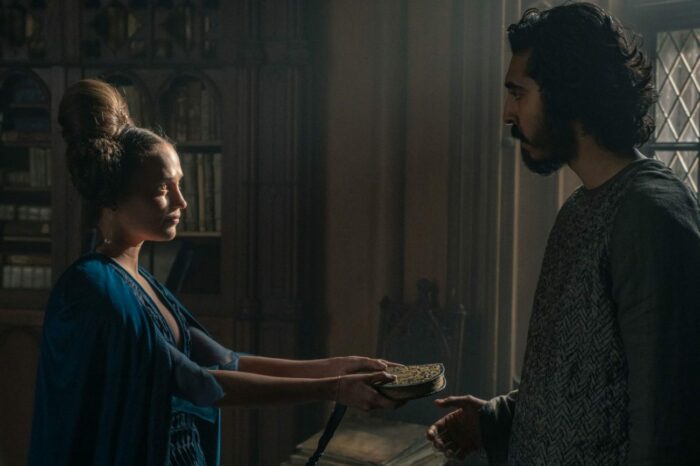
Mulling over the complex totality of The Green Knight and how it portrays the 14th-century Sir Gawain and the Green Knight, the befuddling result comes down, equally so for the main character’s quest, to choices. Much like A Ghost Story and other A24 critical darlings, extrapolating the method within the madness or untangling the greater reasoning requires its own study hall in a large library and therapy session stretched out on a leather couch. Lo and behold, leave it to a comedic Instagram post from cartoonist Luke McGarry with a flowchart to streamline the perceived thought process better than I ever could with double the number of words of this review.
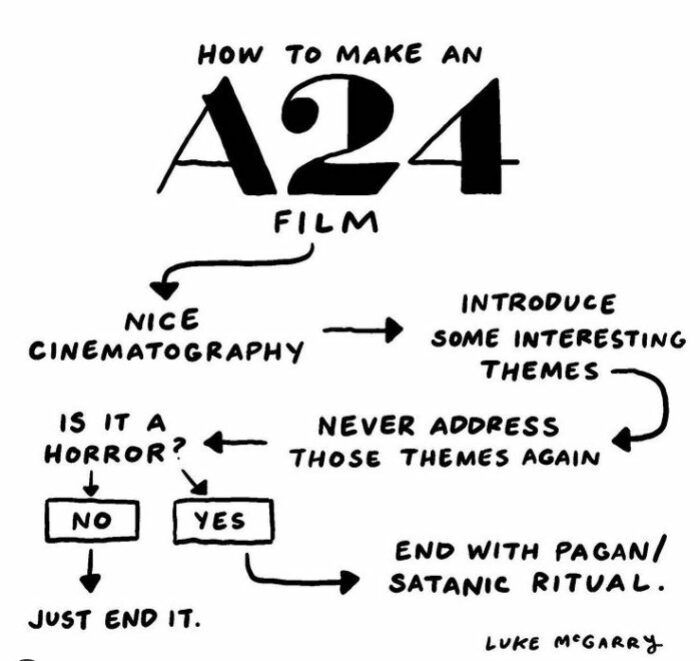
Every hardcore cinephile’s favorite studio has become their own monotonous metaphor built on obtuse films and effusive worship. McGarry nails it and too many of those same arrow-aligned pitfalls besiege The Green Knight. The film gobsmacks its viewers with stunning artistry flowing out of every organic and inorganic surface, and then it all empties into surreality and languishes in obscurity.
The production designs of Jade Healy (A Beautiful Day in the Neighborhood) mesh sublimely with the castles and outlands of the rustic Irish filming locations. Each actor is draped in striking attire designed by Malgosia Turzanska (Hell or High Water) that is never boring and draws ornate attention. Cinematographer Andrew Droz Palermo (A Ghost Story) lassos those ambient natural and manufactured elements with dynamic lighting and a bevy of challenging angles and tracking shots. Finally, Daniel Hart’s haunting, minimalistic score gives symphony to Lowery’s chosen route of epic trepidation.
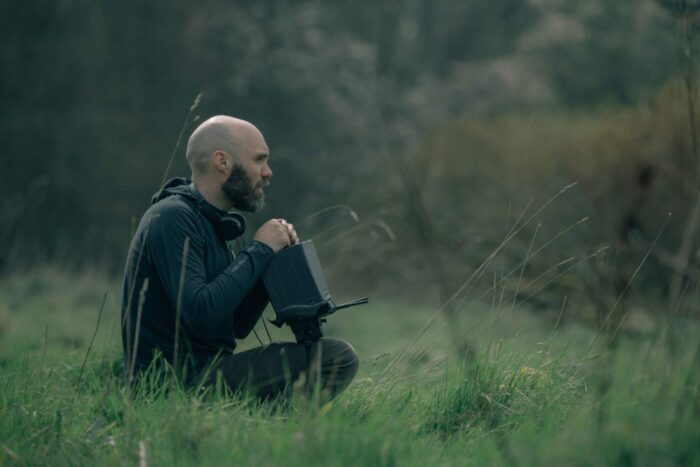
True to the studio’s track record, the ambrosial atmosphere conceived by David Lowery and his team of fellow up-and-coming collaborators is sterling beyond any granted measure. That was never going to be an issue. Instead it is a rightful pillar to praise for what it is.
What isn’t worthy is the vacuous and empty soul underneath the visual finery. To match McGarry’s notes, the scenario of The Green Knight portends and dangles the inherent calamity and greater themes. But then, even after 130 minutes, it all stops a denouement short of full realization and attainment of its promising heights. The best you get is a Peyton Farquhar montage of imagined fantasy.

The Green Knight states all good myths are brave and bold. At some point, that profundity has to go beyond aesthetics. The screen titles also announce that what is presented is not that kind of legend. Yeah, and that’s the problem when considering the source material built with magical bedrock. Never has chivalric romance and so-called adventure been treated so pensively. They over-wrung the wellspring. A little spryness to go with the supernatural sure wouldn’t kill it and go a long way with generating wonder against the artistic eloquence.


